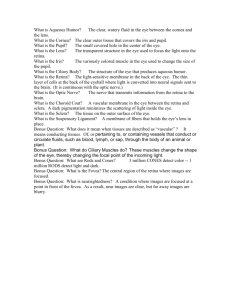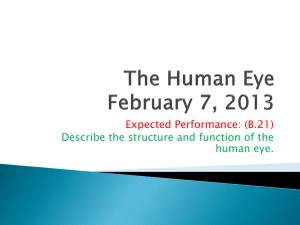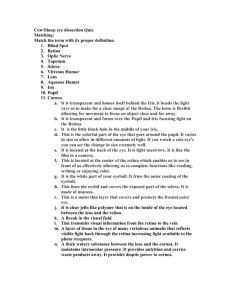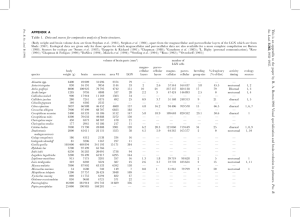9.10/9.100 REVIEW QUESTIONS Visual System Anatomy and Physiology
advertisement
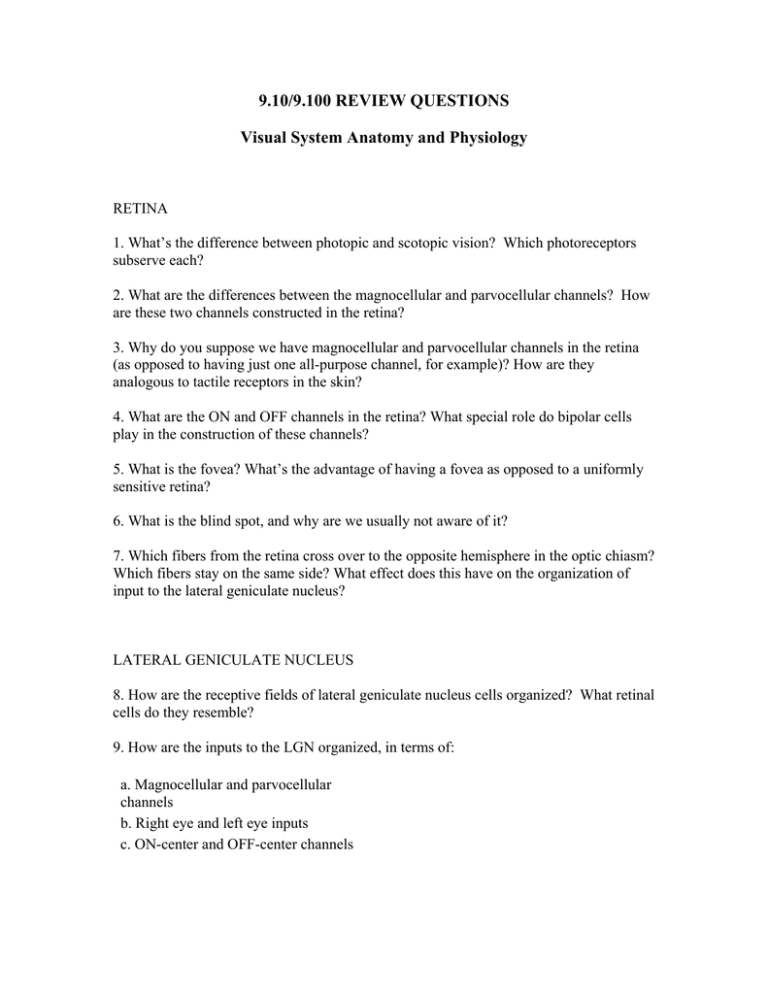
9.10/9.100 REVIEW QUESTIONS Visual System Anatomy and Physiology RETINA 1. What’s the difference between photopic and scotopic vision? Which photoreceptors subserve each? 2. What are the differences between the magnocellular and parvocellular channels? How are these two channels constructed in the retina? 3. Why do you suppose we have magnocellular and parvocellular channels in the retina (as opposed to having just one all-purpose channel, for example)? How are they analogous to tactile receptors in the skin? 4. What are the ON and OFF channels in the retina? What special role do bipolar cells play in the construction of these channels? 5. What is the fovea? What’s the advantage of having a fovea as opposed to a uniformly sensitive retina? 6. What is the blind spot, and why are we usually not aware of it? 7. Which fibers from the retina cross over to the opposite hemisphere in the optic chiasm? Which fibers stay on the same side? What effect does this have on the organization of input to the lateral geniculate nucleus? LATERAL GENICULATE NUCLEUS 8. How are the receptive fields of lateral geniculate nucleus cells organized? What retinal cells do they resemble? 9. How are the inputs to the LGN organized, in terms of: a. Magnocellular and parvocellular channels b. Right eye and left eye inputs c. ON-center and OFF-center channels PRIMARY VISUAL CORTEX (V1) 10. Where is V1 within the human occipital lobes? 11. Where are the upper and lower visual fields represented in V1? Right and left visual fields? 12. What’s special about the representation of the fovea in V1? How is this similar to the organization of the somatosensory system? 13. What types of stimuli do V1 cells respond to? What features of these stimuli are they “tuned” to? (Answer for both simple and complex cells) 14. Give two examples of columnar organization in V1. How do these columnar systems interact? EXTRASTRIATE CORTEX 15. What are the main visual processing streams or pathways projecting from V1 and V2? What functions are ascribed to each stream?



